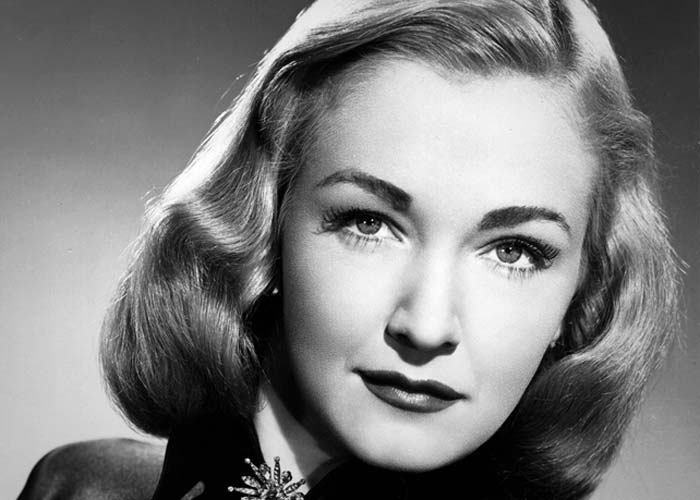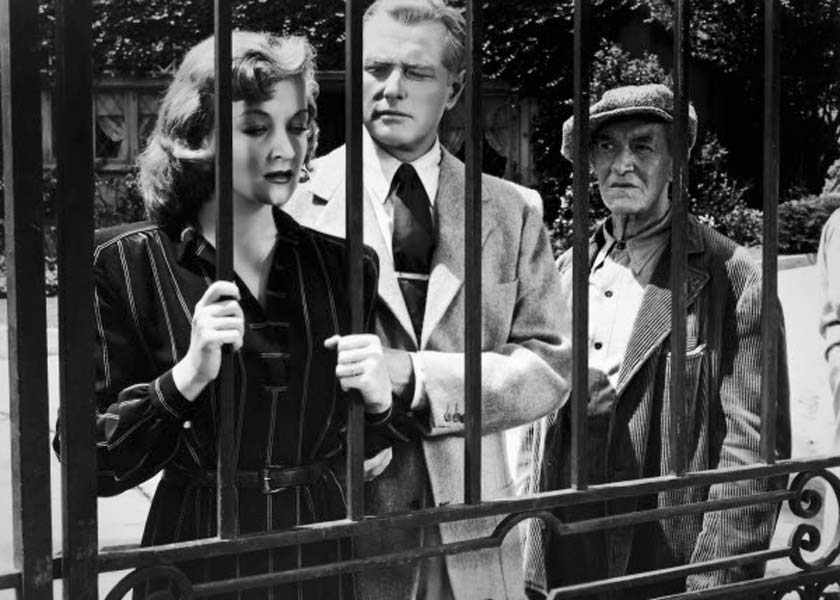Synopsis
In London, Julia Ross (Foch), single and without a family, takes a position as a live-in secretary to Mrs. Williamson Hughes (Whitty). The day she takes the position with Mrs. Hughes, Julia meets Dennis Bruce (Varno), a former boyfriend, who asks her out for dinner the next night. During her first night in Mrs. Hughes’ London house, Mrs. Hughes and her son, Ralph (Macready), drug Julia and take her to their house in Cornwall.
Two days later, Julia awakens in a strange room. She is greeted by the maid as
Marion,
Ralph’s wife. Ralph and Mrs. Hughes call her Marion
and keep
her confined to her bedroom. The bedroom, on an upper floor of the house, has a
single window overlooking the sea. The Hughes’ convince the servants and the
neighbors that Marion
is mentally disturbed. Soon, Julia learns that the
deranged Ralph killed his wife and tossed her body into the sea. Ralph and his
mother plan to kill Julia and convince the authorities that Ralph’s
wife
was a suicide.
Julia makes several attempts to escape but is unsuccessful. Mrs. Hughes intercepts a letter she tries to mail Dennis. Finally, she manages to send Dennis a letter at her former lodgings. With Mrs. Hughes and Ralph planning to kill her at any time, Julia finds a secret passage into her room. She manages to pry the bars out of the window, and escapes through the passage. Julia makes it appear that she fell from the window onto the rocks below.
Ralph approaches the body,
actually Julia’s robe spread on the rocks. Julia
has escaped from the house. She runs from Ralph into her rescuers. Dennis and a
detective have arrived. Ralph flees, and the detective shoots him. Mrs. Hughes is
distraught at her son’s death. Julia is grateful to be alive. She and Dennis
return happily to London.
Discussion
My Name is Julia Ross is a gothic thriller featuring a fine script, good production values, vivid camera work, and a first-rate cast. The many gothic elements include an innocent heroine held in isolation against her will, the psychological menace of the seemingly friendly, but actually malevolent, villains, and her imprisonment in a castle-like mansion (complete with hidden passages), poised over the rocky edge of the sea. The oppressive atmosphere of suspense and terror is well sustained until the end. The limitations inherent in a low budget production are minimized with fine interior sets and excellent camerawork, for instance shots made through doorways and windows, as Julia prowls her elegant, yet antiquated, room and the shadowed halls of the mansion.
The film features the best script of Muriel Roy Bolton's career. Her work includes pleasant scripts for the Henry Aldrich comedy series (1942-44) and other low budget comedies. In the 1950s, Bolton wrote for television, including as head writer and story consultant for the popular series The Millionaire (1955-60). The suspense-filled script of Julia Ross is something of an outlier in her filmography.

Despite her considerable ability, youth and attractiveness, Nina Foch never approached stardom. The cool, aloof demeanor that came to epitomize her was probably incompatible with gaining the audience affection necessary for a starring career. After My Name is Julia Ross, her first standout role, Foch’s career continued with mostly supporting parts in A-level productions. She had major character roles in films such as An American in Paris (1951), Executive Suite (1954) — for which she was nominated for a Supporting Actress Academy Award — and Spartacus (1960). Foch appeared frequently on television, and her final role, at age 83, was in an episode of The Closer in 2007. Foch also appeared on Broadway where she starred in four Shakespeare plays. However, her greatest personal satisfaction came from her forty-year teaching career at the University of Southern California film school, coaching aspiring actors and directors.
Dame May Whitty had been a legitimate actress in England and America for over fifty years before she settled in Hollywood in 1937. She made more than twenty-five films, mostly for MGM, from the mid-1930s to her death, at age 82, in 1948. Although an elderly woman, Whitty’s strong voice and screen presence made her a commanding actress. She effectively played a range of characters, from the charming the spy in The Lady Vanishes (1938), the lovable old homebody in Lassie Come Home (1943), the nosey Mrs. Thaites in Gaslight (1944) and the nasty Mrs. Bramson in Night Must Fall (1937). As the unapologetically murderous Mrs. Hughes in My Name is Julia Ross, Whitty is especially chilling, a sweet-talking old lady who turns out to be slightly demented and full of menace. Never beloved by the American public like Marie Dressler or May Robson, Whitty’s image was as a versatile and respected older character actress.
After a fifteen year career in the theater, George Macready appeared in his first film, The Commandos Strike at Dawn (1942), at age 43. His scarred, shifty-eyed, high-cheek-boned face and his polished, breathy voice gave him a sly and treacherous demeanor well suited for portraying unscrupulous and psychotic individuals. In an extensive film and television career, he played numerous treacherous characters, perhaps most notably in Kubrick's Paths of Glory (1957).
Director Joseph H. Lewis is best known for one extraordinary film, Gun Crazy (1950). My Name is Julia Ross and The Big Combo (1955) are only slightly lesser achievements. Despite his obvious talent, Lewis always worked with limited budgets, producing interesting films dominated by his unique visual style. Lewis began as an editor from 1935 to 1937 at Universal Studios and the poverty row studio Grand National Films. His directorial career began with second features (low-budget movies shown as the bottom half of a double feature), including films featuring The East Side Kids and B Westerns, from 1937 to 1942. The Silver Bullet (1942), starring Johnny Mack Brown, is often regarded one of the finest B Westerns ever made, notable for the staging of exterior scenes. His other films include So Dark the Night (1946), Retreat, Hell (1952), The Halliday Brand (1955) and Terror in a Texas Town (1958). In the latter part of his career, Lewis directed numerous episodes of television series, including 51 episodes of The Rifleman (1958-63).

